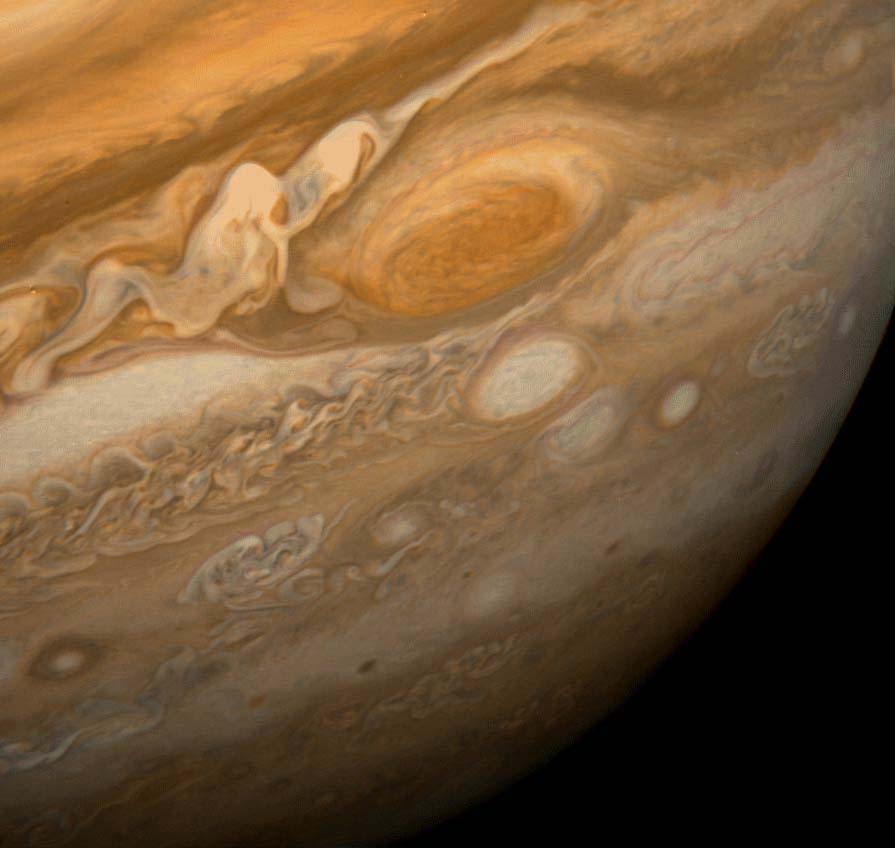Hurricane Patricia is unmatched by Jupiter’s enigmatic red spot, a spinning storm in the planet’s atmosphere large enough to entomb two Earth-sized planets. Yet, even the most massive planet in the solar system can experience shrinkage. The Great Red Spot of Jupiter is decreasing in size, suggesting the storm is in its twilight.
No one knows for sure when the Great Red Spot first appeared since its discovery through a telescope about 400 years ago. Amy Simon from the Goddard Space Flight Center in Maryland told sources that images of the spot are now 10,250 miles across, which is less than 50 percent of its known normal size.
Astronomers have been observing a decline in Jupiter’s red spot since the 1930s. In the 1800s, the storm was originally measured to span 25,500 miles across its axis. In 1979, NASA Jupiter flybys, Voyagers 1 and 2, observed another decrease in the storm’s size, shrinking to 14,500 miles across its axis. In 1995, the Hubble Space Telescope found that the storm downgraded once again, with the storm measuring 13,020 miles across. Prior to the most recent measurement, an image taken in 2009 found that the storm had decreased to 11,130 miles across.
The evolution of the storm
Amateur monitoring beginning in 2012 discovered that there is a rise in the rate by which Jupiter’s red spot is shrinking. The storm appears to be decreasing by about 580 miles a year. Consequently, the shape of the storm has changed from a swirling oval to a dotted circle.
The largest planet in the solar system is mostly made up of hydrogen. It is considered by many astronomers to be a failed star, since it is comprised of the same elements as the sun, but not massive enough to have internal pressure that sparks nuclear fusion — the fuel of stars.
Jupiter’s red spot is its hallmark feature; so much so that it’s easy to mistake the red spot as a permanent feature of the planet, rather than a long-lived storm. Yet no storm lasts forever. Nevertheless, astronomers are curious as to why the red spot has been shrinking at an increasing rate.
“In our new observations it is apparent very small eddies are feeding into the storm,” said Amy Simon of NASA’s Goddard Space Flight Center. “We hypothesized these may be responsible for the accelerated change by altering the internal dynamics and energy of the Great Red Spot,” she added.
Another possibility is that there is an unknown force acting on Jupiter’s atmosphere, which may be exhausting energy and weakening the storm, thereby causing it to shrink. Nevertheless, scientists remain flummoxed. No one knows for sure what is responsible for the shrinkage of the spot.
Since the red spot has deceased in size, it doesn’t take as long for it to make a full counter clockwise rotation. The storm used to rotate every six days, whereas now it rotates every four days.
Future of Jupiter’s red spot remains unknown
Whether or not Jupiter’s red spot will blink out of existence is anyone’s guess. If the storm continues to wane, Jupiter’s junior red spot, a corollary of three vortices merging together between 1998 and 2000, eagerly sits in the wings, waiting to take its place. Either that, or Jupiter’s red spot could experience a regrowth fueled by unexpected Jovian jet streams.
This isn’t the first time astronomers have witnessed the disappearance of a massive storm. The Voyager 2 spacecraft captured images of a “Great Dark Spot” on Neptune as it flew by the planet in 1989. In 1994, however, the dark spot was invisible to the Hubble Space Telescope.
Astronomers hope to have more precise answers about the future of Jupiter’s red spot in July 2016, when NASA’s Juno spacecraft reaches the giant planet.
Sources:
TechTimes.com
AstroBob.AreaVoices.com
Space.com
















